Snake Plant: Growing and Caring Tips for Snake Plant
By Zakir Hossain
Published: Jan 10, 2025
Share the post

Table of contents
The Snake Plant, also known as Sansevieria or Mother-in-Law's Tongue, is a popular choice among houseplant enthusiasts. This resilient plant is cherished for its striking appearance, air-purifying qualities, and low maintenance requirements. Whether you're a seasoned gardener or a beginner, the Snake Plant makes an excellent addition to any indoor garden. In this article, we'll explore everything you need to know about growing and caring for Snake Plants.
Quick Facts or Basic Information About the Snake Plant
| Feature | Details |
|---|---|
| Common Name | Snake Plant |
| Scientific Name | Sansevieria trifasciata |
| Origin | West Africa |
| Unique Characteristics | Tall, upright leaves with variegated patterns; resilient |
Overview of the Snake Plant
Plant Introduction
The Snake Plant, scientifically known as Sansevieria trifasciata, originates from the tropical regions of West Africa. It is recognized by its tall, upright leaves that are often variegated with striking patterns of green and yellow.
Popularity
The Snake Plant has gained immense popularity as a houseplant due to its aesthetic appeal and low maintenance requirements. Its ability to thrive in a variety of conditions makes it a favorite among plant enthusiasts. Additionally, its air-purifying qualities, as confirmed by NASA's Clean Air Study, contribute to its reputation as a beneficial indoor plant.
Varieties of Snake Plant
| Variety | Description |
|---|---|
| Sansevieria trifasciata | Classic variety with dark green, upright leaves |
| Sansevieria cylindrica | Cylindrical leaves with a unique, modern look |
| Sansevieria 'Laurentii' | Variegated leaves with yellow edges |
| Sansevieria 'Moonshine' | Silvery-green leaves with a softer appearance |
| Sansevieria 'Hahnii' | Compact, rosette-forming variety |
How to Choose the Correct Snake Plant to Grow
- Consider the space where you plan to place the Snake Plant.
- Think about the aesthetic you prefer (e.g., upright leaves vs. cylindrical).
- Determine your light availability (some varieties handle low light better).
- Check for variegation if you want a splash of color.
- Opt for a smaller variety if you have limited space.
Ideal Growing Conditions of Snake Plant
Light
Snake Plants thrive in a variety of lighting conditions, from full sun to low-light environments. However, they grow best in bright, indirect light.
Watering Needs
Watering should be done sparingly. Allow the soil to dry out completely between waterings. Overwatering can lead to root rot, which is a common issue with Snake Plants.
Temperature & Humidity
Snake Plants prefer temperatures between 60-75°F (15-24°C). They can tolerate lower humidity levels, making them suitable for typical indoor conditions.
Soil Type
Well-draining soil is essential for Snake Plants. A cactus or succulent mix is ideal, as it prevents water from sitting in the pot, which can cause root rot.
Plantation Procedure of Growing Snake Plant
Materials Needed
- Snake Plant cutting or pup
- Pot with drainage holes
- Well-draining soil mix
- Watering can
Step-by-Step Procedure
- Prepare the Pot: Choose a pot with drainage holes and fill it with a well-draining soil mix.
- Planting: If using a cutting, let it callous over for a few days before planting. Place the cutting or pup in the soil, ensuring the base is covered.
- Watering: Water the plant lightly after planting. Allow the soil to dry out completely before the next watering.
- Placement: Place the pot in a location with bright, indirect light.
Care and Maintenance Tips for Snake Plant
Lighting
While Snake Plants can tolerate low light, they thrive in bright, indirect sunlight. Avoid placing them in direct sunlight for prolonged periods, as it can scorch the leaves.
Watering
Water sparingly, allowing the soil to dry out completely between waterings. Overwatering is the most common mistake and can lead to root rot.
Soil
Use a well-draining soil mix, such as a cactus or succulent mix, to prevent water from sitting in the pot.
Temperature and Humidity
Maintain temperatures between 60-75°F (15-24°C) and keep humidity levels low to moderate. Snake Plants can tolerate dry indoor air.
Fertilization
Feed your Snake Plant with a balanced, water-soluble fertilizer every 2-3 months during the growing season (spring and summer). Avoid fertilizing in the winter months.
Pruning
Remove dead or damaged leaves by cutting them at the base. Pruning helps maintain the plant's shape and encourages new growth.
How to Propagate or Repot the Snake Plant
Propagating Snake Plants is simple. They can be propagated through leaf cuttings or by dividing the rhizomes. Check our detailed guide on propagating snake plants. When repotting, choose a slightly larger pot and use fresh, well-draining soil.
Common Problems and Solutions of Snake Plant
Common Issues
- Yellowing Leaves: Often caused by overwatering. Ensure the soil dries out completely between waterings.
- Pest Infestations: Snake Plants can be prone to spider mites and mealybugs. Treat with insecticidal soap or neem oil.
- Root Rot: Caused by overwatering and poor drainage. Use well-draining soil and water sparingly.
Symptoms and Solutions
- Wilting: Typically due to underwatering. Water the plant and adjust the watering schedule.
- Brown Tips: Usually a sign of low humidity or inconsistent watering. Maintain consistent watering and consider using a humidity tray.
Styling and Placement Tips for Snake Plant
Indoor Placement Ideas
- Living Room: Place a tall Snake Plant near a window for a striking focal point.
- Bedroom: A compact variety on a bedside table adds a touch of greenery.
- Bathroom: Use a Snake Plant in a decorative pot to enhance the aesthetic as a plant in bathroom.
- Office: Snake Plant is one of the best Plants for the Office to Transform Work Environment
Pot Selection Tips
- Choose pots that complement your decor. Neutral colors and natural materials like clay or ceramic work well.
- Ensure the pot has drainage holes to prevent waterlogging.
Creative Integration
- Use Snake Plants to create a green divider in open-plan spaces.
- Combine different varieties for a dynamic display.
- Incorporate Snake Plants in minimalist or modern decor for a sleek look.
Benefits of the Snake Plant
Environmental Benefits
- Air Purification: Snake Plants filter toxins like formaldehyde, benzene, and xylene, improving indoor air quality.
Psychological Benefits
- Stress Reduction: Studies show that having plants around can reduce stress and enhance well-being.
- Improved Concentration: Greenery can help boost productivity and focus.
Practical Uses
- Ornamental: The aesthetic appeal makes Snake Plants a popular choice for home decor.
- Medicinal: In some cultures, Snake Plants are believed to have healing properties.
Fun Facts or Cultural Significance
- Snake Plants are also known as "Mother-in-Law's Tongue" due to their sharp, pointed leaves.
- In Feng Shui, Snake Plants are believed to bring good luck and positive energy.
- The plant is called the "money plant" in some cultures, symbolizing prosperity.
Conclusion
The Snake Plant is a versatile and resilient houseplant that offers both aesthetic and health benefits. Its low maintenance requirements and ability to thrive in various conditions make it an ideal choice for any home. If you haven't already, consider adding a Snake Plant to your collection today and experience the joy of growing this remarkable plant.
Frequently Asked Questions (FAQs)
Q1: How often should I water my Snake Plant?
A: Water your Snake Plant sparingly, allowing the soil to dry out completely between waterings. Typically, watering once every 2-3 weeks is sufficient.
Q2: Can Snake Plants tolerate low light conditions?
A: Yes, Snake Plants are known for their ability to tolerate low light, but they thrive best in bright, indirect light.
Q3: How do I propagate a Snake Plant?
A: Snake Plants can be propagated through leaf cuttings or by dividing the rhizomes. For detailed instructions, check our propagation guide here.
Q4: What should I do if my Snake Plant has yellow leaves?
A: Yellow leaves are often a sign of overwatering. Ensure the soil dries out completely between waterings and adjust your watering schedule.
Q5: Can I keep a Snake Plant in my bedroom?
A: Absolutely! Snake Plants are excellent for bedrooms as they release oxygen at night, contributing to better air quality and sleep.
Resources
Recommended Books
- "The House Plant Expert" by Dr. D.G. Hessayon
- "How to Houseplant" by Heather Rodino
Websites
Online Purchasing Platform
Related Posts

Best Plants for the Office to Transform Work Environment
Discover the best plants for the office to enhance productivity, improve air quality, and boost decor. Learn about low-maintenance, air-purifying, and desk-friendly plants with care tips and styling ideas.
By Zakir Hossain
Published: Nov 28, 2024
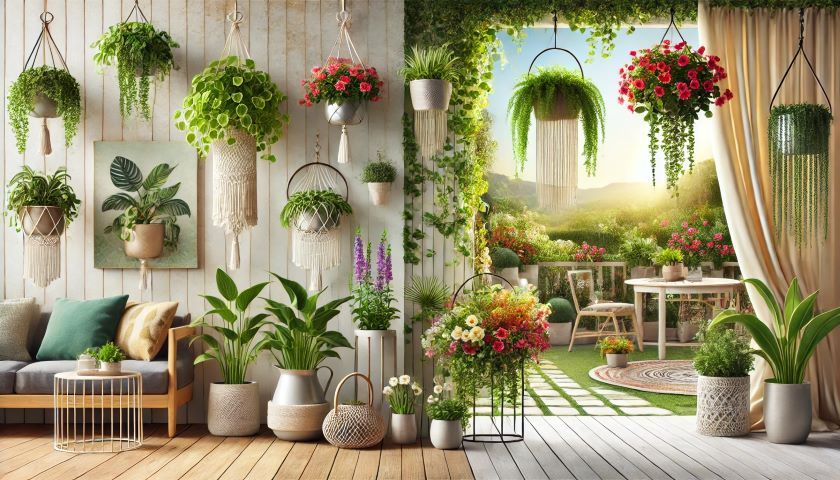
Best Hanging Plants to Elevate Your Space with Greenery
Find the elegance and adaptability of hanging plants. Discover the greatest indoor and outdoor hanging plants, maintenance advice, design ideas, and more to liven your area with flora.
By Zakir Hossain
Published: Dec 17, 2024

Detailed Guide for Growing Jade Plants and Tips for Caring Jade Plants
Discover the ultimate guide to growing jade plants and expert tips on caring for them. Learn how to plant, water, and maintain your jade plant, and explore propagation techniques. Perfect for beginners and seasoned gardeners.
By Zakir Hossain
Published: Nov 19, 2024
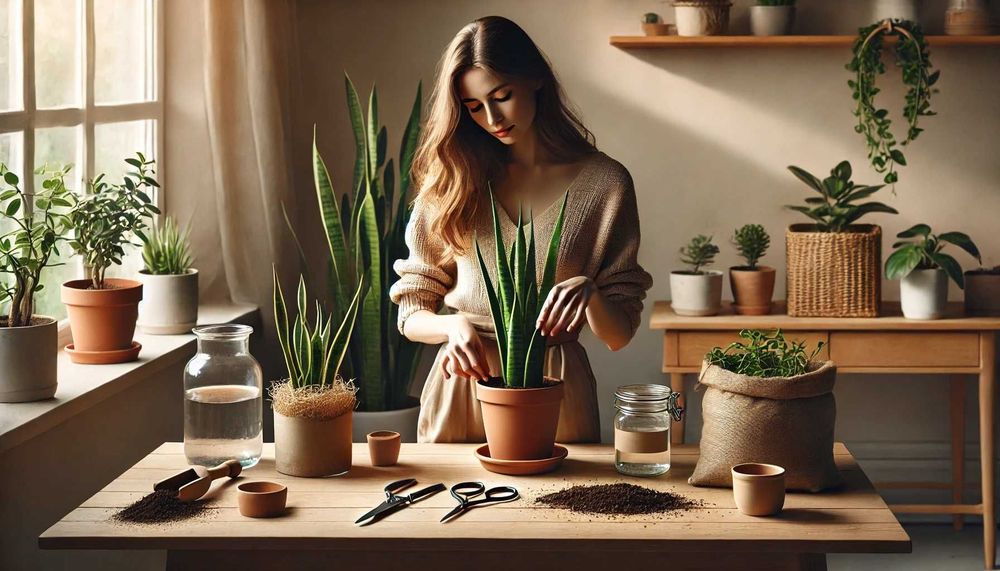
How to Propagate Snake Plant: Easy Step-by-Step Guide
Learn how to propagate snake plants using different methods like water, soil, leaf cuttings, and division. A step-by-step guide to expanding your indoor garden effortlessly.
By Zakir Hossain
Published: Dec 10, 2024

Indoor Gardening Tips for beginners: An Ultimate Guide
Indoor gardening is a fulfilling hobby that allows you to grow herbs, vegetables, and plants indoors, even with limited space. This guide offers essential tips for beginners on plant selection, light requirements, proper watering, and soil use. It also includes step-by-step instructions for setting up your indoor garden and maintaining plant health with the help of LED grow lights. For useful products to enhance your indoor gardening experience, check out these recommended items. Happy gardening!
By Md Zakir Hossain
Published: Nov 6, 2024
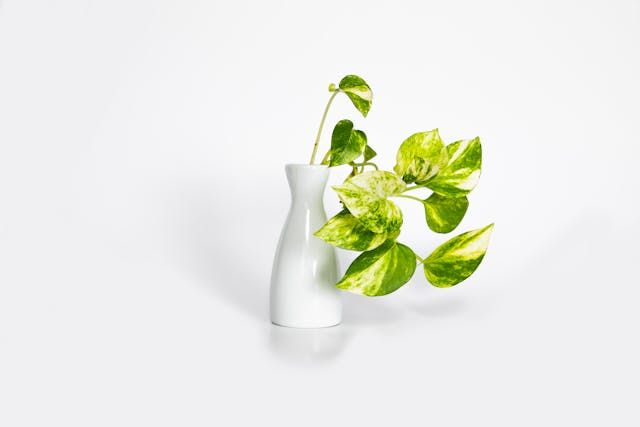
Pathos (Epipremnum aureum): Growing and Caring Tips for Pathos
Discover how to grow and care for Pathos plants with this detailed guide. Learn about lighting, watering, soil, propagation, and more. Perfect for houseplant enthusiasts, this guide will help you maintain healthy Pathos plants.
By Zakir Hossain
Published: Jan 8, 2025

Peace Lily: Growing and Caring Tips for Peace Lily
Learn how to grow and care for Peace Lily with our detailed guide. Discover tips for lighting, watering, soil, and propagation. Perfect for houseplant enthusiasts, this guide will help you maintain a thriving Peace Lily.
By Zakir Hossain
Published: Jan 8, 2025

Plants for Bathroom: Transforming Your Bathroom into a Green Oasis
Transform your bathroom into a peaceful green oasis with a few of these exceptional plants for bathroom. Learn about the best plants for bathrooms with low light, no light, and high humidity, as well as design ideas and care tips.
By Zakir Hossain
Published: Nov 24, 2024

Hydroponic Gardening: Learn About Soil-Free Growing
Unlock the benefits of hydroponic gardening with our comprehensive guide. Discover top plants which can grow hydroponically, efficient grow systems, and tips for cultivating herbs, vegetables. Explore essential supplies and advanced techniques to maximize your hydroponic garden's potential.
By Jubair Rubel
Published: Nov 8, 2024
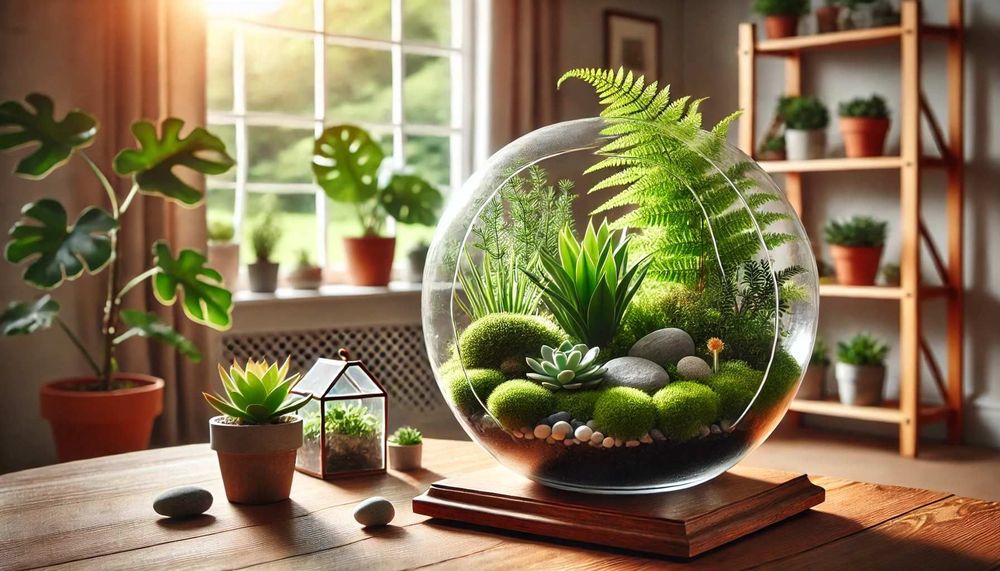
Indoor Gardening with Terrarium Plants: Benefits and Ideas
Discover the ultimate guide to terrarium plants, featuring the best plants for open and closed terrariums, care tips, and creative ideas to enhance your indoor greenery.
By Zakir Hossain
Published: Dec 9, 2024
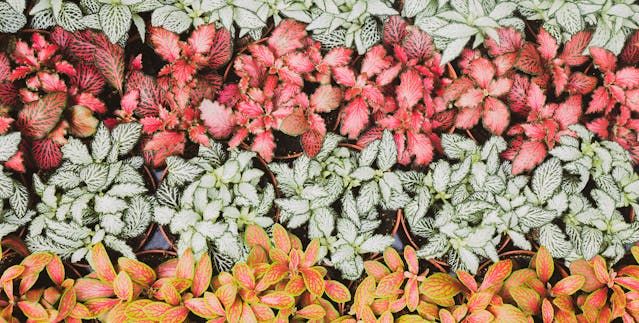
Begonia Care: Growing Different Types of Begonias and How to Care for Them
Discover the ultimate guide to begonia care, from planting to propagating different types. Learn essential tips for light, watering, soil, and tackling common problems to ensure your Begonias thrive and bloom year-round.
By Zakir Hossain
Published: Dec 31, 2024
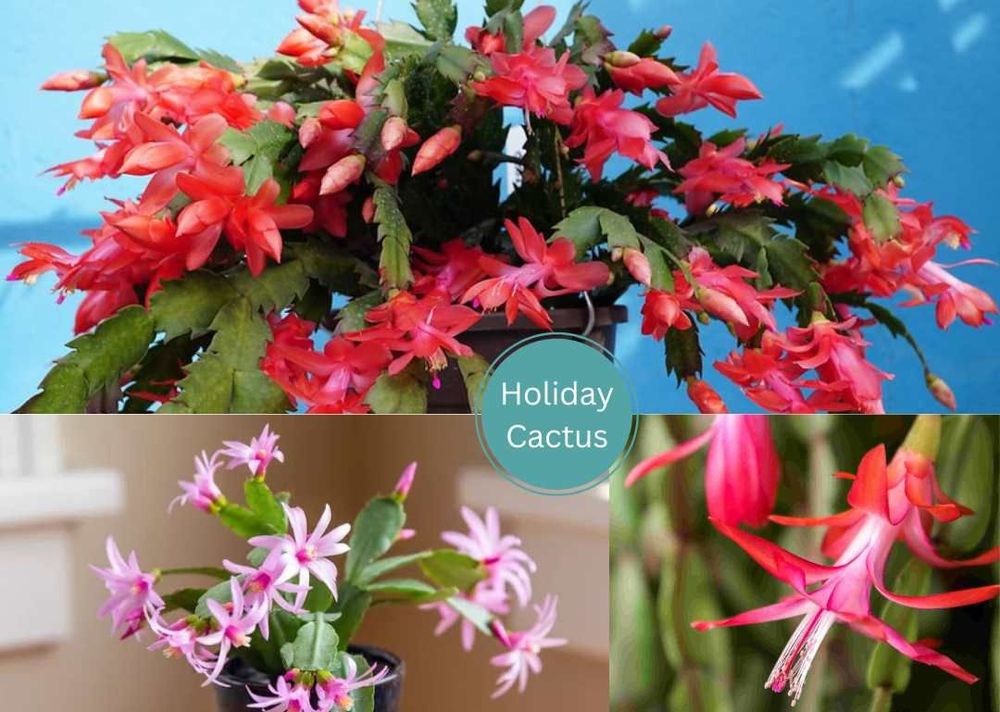
Holiday Cactus Plants: Christmas Cactus vs Thanksgiving Cactus vs Ester Cactus
Explore the beauty and originality of holiday cactus plants! Compare Thanksgiving, Christmas, and Easter Cacti, learn their maintenance, and select the right holiday plant for your house.
By Zakir Hossain
Published: Dec 12, 2024
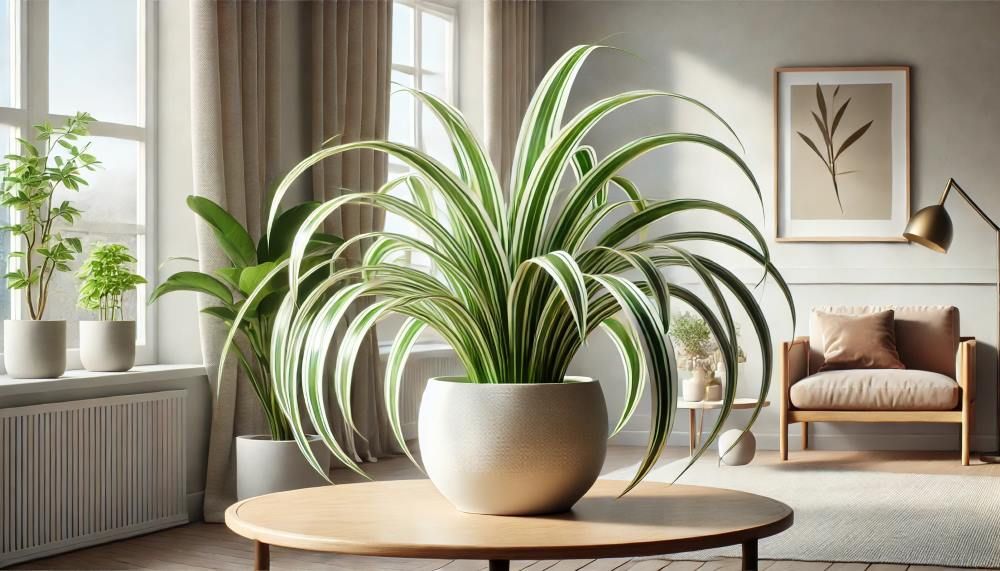
Spider Plant: Growing and Caring Tips for Spider Plant
Learn everything about Spider Plant, from growing tips to care and propagation, ideal conditions, and benefits. Discover why Spider Plant is a favorite houseplant for beginners and experts alike.
By Zakir Hossain
Published: Jan 9, 2025
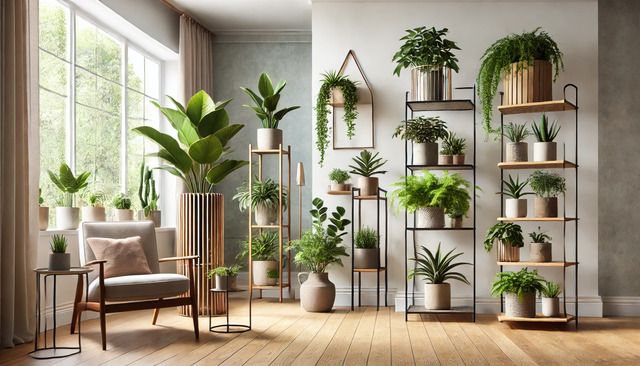
Top 10 Stylish & Space-Saving Indoor House Plant Stands to Elevate Your Home
Discover the top 10 stylish and space-saving indoor house plant stands to elevate your home decor. Learn about functional benefits, buying guides, and trending designs to keep your indoor plants displayed beautifully and efficiently.
By Zakir Hossain
Published: Nov 26, 2024